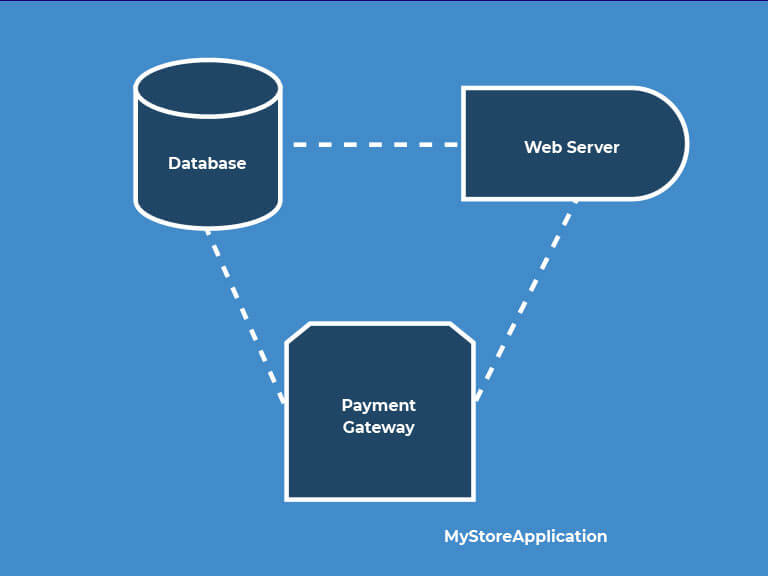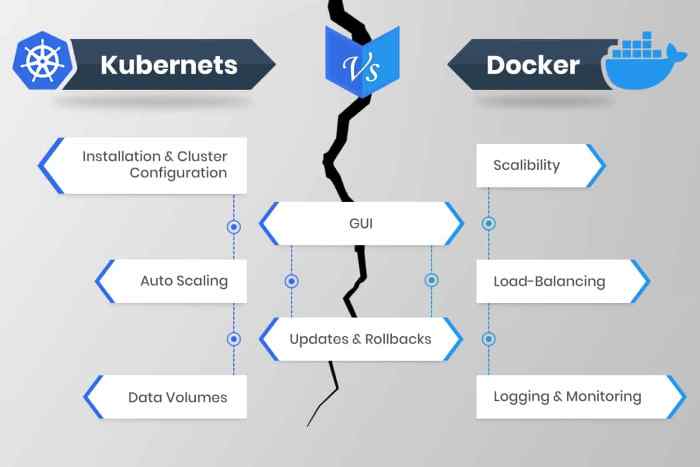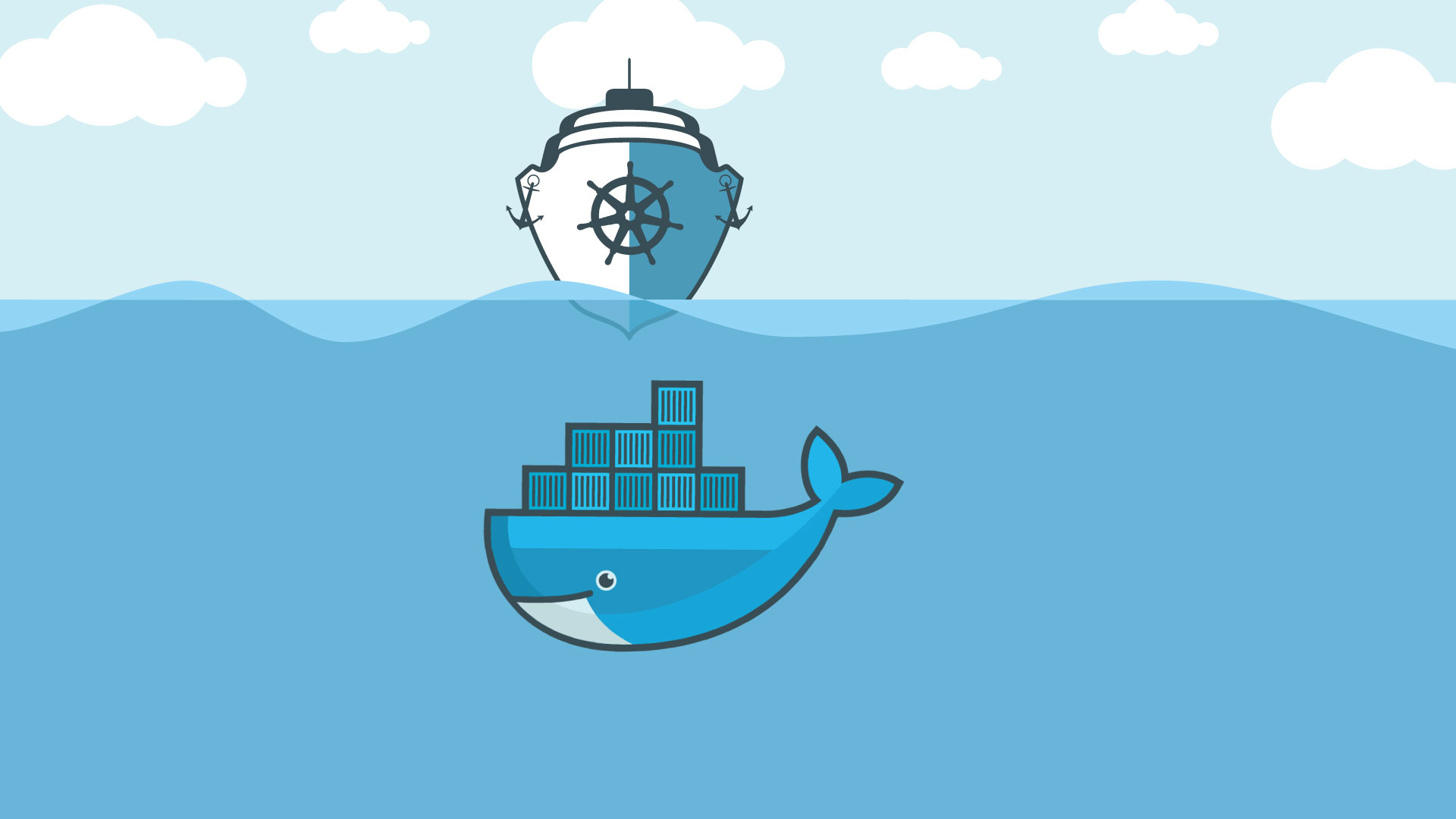Understanding the Basics: Docker Compose and Kubernetes
Container orchestration tools, such as Docker Compose and Kubernetes, have become essential for managing complex and large-scale applications. These tools automate the deployment, scaling, and management of containers, allowing developers to focus on building and delivering high-quality software. In this article, we will compare and contrast Docker Compose and Kubernetes, helping you understand which one is better suited for your needs.
Docker Compose is a popular container orchestration tool that is used for defining and running multi-container Docker applications. It is ideal for small-scale applications and development environments, as it simplifies the process of managing multiple containers and their dependencies. Docker Compose offers several advantages, including ease of use, portability, and a simple syntax for defining services.
On the other hand, Kubernetes is a robust and feature-rich container orchestration platform that is designed for large-scale and complex deployments. It offers a wide range of features, including service discovery, storage management, and automated rollouts. Kubernetes is a powerful tool that can handle the most demanding container orchestration requirements, making it a popular choice for production environments.
Docker Compose: A Brief Overview
Docker Compose is an open-source container orchestration tool that is used for defining and running multi-container Docker applications. It is a popular choice for small-scale applications and development environments, as it simplifies the process of managing multiple containers and their dependencies. Docker Compose is often used for local development, testing, and staging environments, as it allows developers to quickly spin up and tear down containers.
Docker Compose offers several advantages, including ease of use, portability, and a simple syntax for defining services. It allows developers to define their application’s services, networks, and volumes in a single YAML file, making it easy to manage and share their application’s configuration. Docker Compose also supports a wide range of features, including service discovery, load balancing, and automated restarting of containers.
Docker Compose is a great choice for developers who are looking for a simple and easy-to-use container orchestration tool. It is also a popular choice for organizations that are looking for a cost-effective solution for managing their development environments. However, Docker Compose may not be suitable for large-scale and complex deployments, as it lacks some of the advanced features offered by Kubernetes.
Kubernetes: A Comprehensive Solution for Container Orchestration
Kubernetes is a powerful and feature-rich container orchestration platform that is designed for large-scale and complex deployments. It offers a wide range of features, including service discovery, storage management, and automated rollouts. Kubernetes is a popular choice for production environments, as it can handle the most demanding container orchestration requirements.
Kubernetes is an open-source platform that is maintained by a large and active community of contributors. It offers a wide range of features, including self-healing, automatic scaling, and rolling updates. Kubernetes also supports a wide range of integrations, including networking, storage, and monitoring solutions. This makes it a flexible and customizable platform that can be tailored to meet the specific needs of any organization.
Kubernetes is a complex platform that requires a significant investment in time and resources to learn and master. However, the benefits of using Kubernetes far outweigh the costs. Kubernetes offers a high level of automation, which can help organizations reduce their operational overhead and improve their productivity. It also offers a high degree of flexibility, which allows organizations to deploy and manage their applications in a wide range of environments, including on-premises, cloud, and hybrid environments.
How to Choose Between Kubernetes and Docker Compose
When it comes to choosing between Kubernetes and Docker Compose, there are several factors to consider. By evaluating these factors, you can make an informed decision about which tool is better suited for your needs.
- Application size and complexity: Docker Compose is ideal for small-scale applications and development environments, while Kubernetes is designed for large-scale and complex deployments. If you are working on a small application with a limited number of services, Docker Compose may be the better choice. However, if you are working on a large and complex application with multiple services and dependencies, Kubernetes is likely the better choice.
- Desired level of automation: Kubernetes offers a higher level of automation than Docker Compose, which can help organizations reduce their operational overhead and improve their productivity. If you are looking for a tool that can automate the deployment, scaling, and management of your containers, Kubernetes is the better choice.
- Integration requirements: Kubernetes supports a wide range of integrations, including networking, storage, and monitoring solutions. If you have specific integration requirements, Kubernetes may be the better choice.
- Learning curve: Kubernetes has a steeper learning curve than Docker Compose, and requires a significant investment in time and resources to learn and master. If you are looking for a tool that is easy to learn and use, Docker Compose may be the better choice.
To help you make an informed decision, consider creating a checklist or decision tree that takes into account these factors. By evaluating your specific needs and requirements, you can choose the tool that is best suited for your organization.
Real-World Applications: Success Stories and Case Studies
When it comes to container orchestration, both Kubernetes and Docker Compose have been successfully used in a wide range of real-world applications. Here are some success stories and case studies that highlight the benefits and challenges of using these tools in production environments.
Docker Compose Success Stories
- Company A: Company A used Docker Compose to streamline their development and testing processes. By using Docker Compose, they were able to quickly spin up and tear down containers, reducing their development cycle times and improving their productivity.
- Company B: Company B used Docker Compose to manage their microservices architecture. By using Docker Compose, they were able to define and run their microservices in a simple and efficient way, reducing their operational overhead and improving their scalability.
Kubernetes Success Stories
- Company C: Company C used Kubernetes to manage their large-scale and complex deployment. By using Kubernetes, they were able to automate the deployment, scaling, and management of their containers, reducing their operational overhead and improving their productivity.
- Company D: Company D used Kubernetes to manage their hybrid cloud environment. By using Kubernetes, they were able to deploy and manage their containers in both on-premises and cloud environments, improving their flexibility and scalability.
When using Kubernetes and Docker Compose in production environments, it is important to consider the challenges that these tools can present. These challenges can include complex configurations, steep learning curves, and the need for ongoing maintenance and support. However, by following best practices and tips, organizations can overcome these challenges and enjoy the benefits of using these powerful container orchestration tools.
Getting Started with Kubernetes and Docker Compose: Installation and Configuration
Getting started with Kubernetes and Docker Compose is a straightforward process that can be completed in a few simple steps. Here is a step-by-step guide on how to install and configure these tools, including system requirements, prerequisites, and best practices.
Installing Docker Compose
- Ensure that your system meets the prerequisites for installing Docker Compose.
- Download the latest version of Docker Compose from the Docker Compose GitHub page.
- Install Docker Compose by following the instructions for your specific operating system.
- Verify the installation by running the command `docker-compose –version`.
Installing Kubernetes
- Ensure that your system meets the system requirements for installing Kubernetes.
- Choose a Kubernetes installation method, such as Minikube or Rancher.
- Follow the installation instructions for your chosen method, including any prerequisites and best practices.
- Verify the installation by running the command `kubectl version`.
By following these simple steps, you can quickly and easily install and configure Kubernetes and Docker Compose on your system. Remember to follow best practices, such as keeping your tools up-to-date and regularly monitoring and logging your containers, to ensure a smooth and efficient container orchestration experience.
Best Practices and Tips for Using Kubernetes and Docker Compose
When using Kubernetes and Docker Compose for container orchestration, it is important to follow best practices and tips to ensure a smooth and efficient experience. Here are some best practices and tips for using Kubernetes and Docker Compose.
Monitoring
- Monitor your containers and clusters regularly to ensure they are running smoothly and efficiently. Use tools such as Prometheus, Grafana, or Nagios to monitor your containers and clusters.
- Set up alerts and notifications to be notified of any issues or problems with your containers and clusters. This will help you quickly identify and resolve any issues before they become major problems.
Logging
- Implement a logging strategy for your containers and clusters. Use tools such as Fluentd, Logstash, or ELK (Elasticsearch, Logstash, Kibana) to collect, process, and analyze your logs.
- Centralize your logs to make it easier to search, analyze, and troubleshoot issues. This will help you quickly identify and resolve any issues with your containers and clusters.
Security
- Implement security best practices for your containers and clusters. Use tools such as network policies, secrets management, and image scanning to secure your containers and clusters.
- Regularly update and patch your containers and clusters to ensure they are secure and up-to-date. This will help protect against vulnerabilities and attacks.
By following these best practices and tips, you can ensure a smooth and efficient container orchestration experience with Kubernetes and Docker Compose. Remember to regularly monitor, log, and secure your containers and clusters to ensure they are running smoothly and efficiently.
The Future of Container Orchestration: Trends and Predictions
Container orchestration is a rapidly evolving field, and Kubernetes and Docker Compose are at the forefront of this evolution. Here are some trends and predictions for the future of container orchestration, and how Kubernetes and Docker Compose are likely to evolve and adapt to these changes.
Increased Adoption of Kubernetes
- Kubernetes has already gained widespread adoption in the enterprise, and this trend is likely to continue. According to a recent survey, 78% of organizations are currently using or planning to use Kubernetes.
- Kubernetes is likely to become even more feature-rich and user-friendly, making it easier for organizations to adopt and use. This will help Kubernetes maintain its position as the leading container orchestration platform.
Emergence of New Container Orchestration Tools
- While Kubernetes is currently the leading container orchestration platform, new tools are likely to emerge in the future. These tools may offer new features, capabilities, or approaches to container orchestration.
- It is important for organizations to stay up-to-date with the latest developments in container orchestration, and to evaluate new tools as they become available. This will help organizations choose the best tool for their needs, and stay ahead of the competition.
Greater Focus on Security
- Security is a critical concern in container orchestration, and this trend is likely to continue. Organizations will need to implement robust security measures to protect their containers and clusters from vulnerabilities and attacks.
- Kubernetes and Docker Compose are likely to continue to improve their security features, making it easier for organizations to secure their container orchestration environments.
By staying up-to-date with the latest trends and predictions in container orchestration, organizations can ensure they are using the best tools and practices for their needs. This will help them stay ahead of the competition, and ensure a smooth and efficient container orchestration experience.




